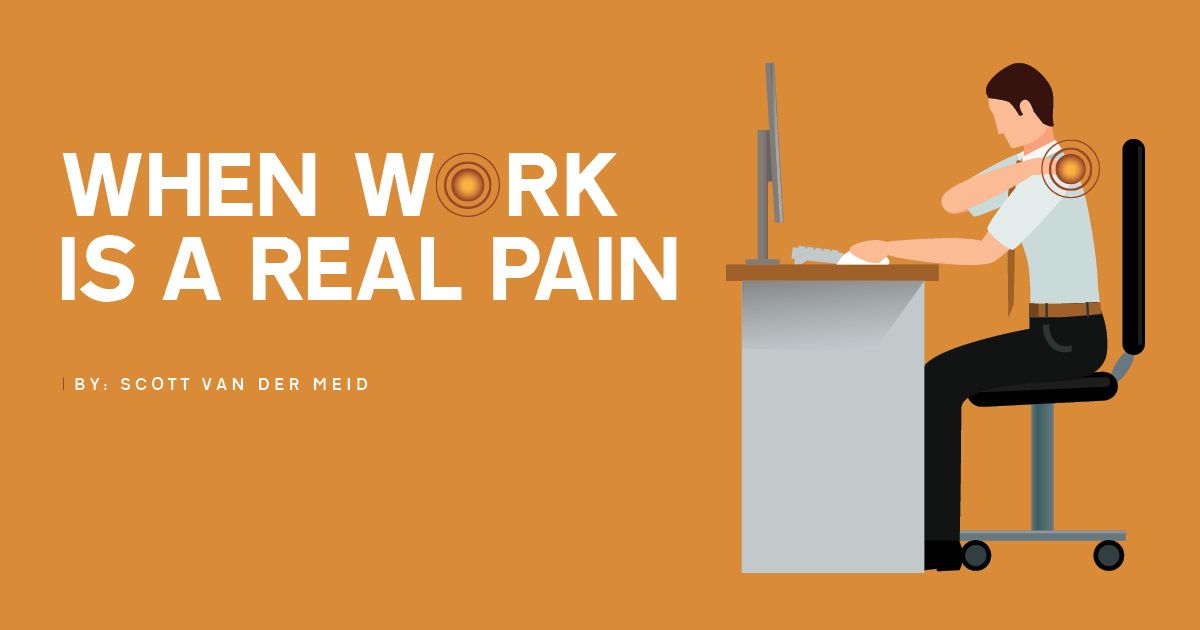My new reality started in March with COVID and the best intentions. I still went into the office and worked solo while all of my colleagues worked from home. By May—when proposal season kicked into high gear—my time in LMD’s office dwindled to once a week. As my work hours got longer and longer, I realized I needed to create a home office.
Home office, take one. My first home office was in our sitting room. I had a very narrow library table set up with two monitors on the left and right and my laptop in the middle. This was fine for about a month—until I noticed that my forearms and hands would get numb and tingly while I worked. It wasn’t until I took a vacation in July that these strange feelings subsided. I concluded my symptoms were directly related to my work environment. Weeks of resting my forearms against the edge of my desk put pressure on my arms, causing muscle and nerve damage.
Home office, take two. After our family vacation, I moved to the dining room table, where I could stretch my arms across plenty of workspace. But three energy sources—my kids—persistently disrupted my workflow (not to mention video conference calls). An open floor plan with kids isn’t conducive to work productivity during a pandemic.
Home office, take three. I tried out our family room, which was originally a game room for my youngest. Much to his disapproval, I exerted eminent domain to secure this more ideal work location. I set up a larger table that I borrowed from LMD’s offices, found an old wooden chair, and kept one large monitor to complement my laptop. Even though this was an improvement, the numbness and tingling in my right arm and hand returned. By early afternoon each day, a nagging knot of pain would develop in my upper back behind my shoulder. To date, no amount of pain killers, anti-inflammatories, acupuncture, or chiropractic has provided relief.
So how did I get here and how can you avoid a similar fate? Experts from Cornell University and the Cleveland Clinic Center for Spine Heath say that poor posture when sitting for prolonged periods is the culprit. Here’s what they recommend to stop or avoid work-related back (and neck and shoulder) pain:
- Think right angles. The best posture is with your knees 90 degrees over your ankles with your feet squarely on the ground. Sit with your back straight (no hunching!), arms extended, and head positioned squarely above your shoulders.
- A chair is a chair is a chair, right? Wrong! Choose a chair that provides good lumbar support for your lower back. I brought home an Aeron chair from the office.
- Don’t forget to breathe. The best way to breathe when sitting is to let your belly fill with air and expand outward. When you exhale, engage your core muscles and draw your navel toward your spine.
- Keep your distance. You should sit about an arm’s length from your monitor, which should be slightly above eye level. Ideally, your mouse should be next to your keyboard so you don’t overreach or twist.
- Take a break. Experts advise moving at least once an hour. Walk away from your desk and do some shoulder rolls to boost circulation and stretches to reduce spinal pressure.
- Don’t cradle your phone. Stop holding a phone between your ear and your shoulder while you do other work. There are plenty of technology-enabled options to end this habit. Buy earbuds or a headset, use the speakerphone, or take your calls through your computer.
- Get extra sleep. This can be hard with busy work schedules, but rest is essential for healing irritated and overused muscles and nerves.
- Go ergonomic. In addition to positioning your computer and monitor for proper posture and body alignment, consider using a standing workstation to help with flexibility (which can reduce pain).
I’m incorporating these tips to see if I can get some relief—and avoid seeing a specialist.
If your business is looking for marketing relief, check out LMD and see how we can help.

